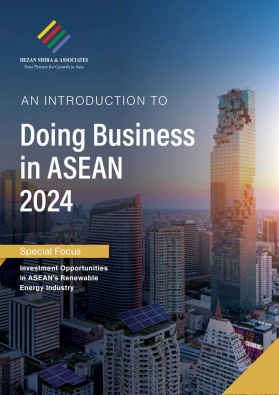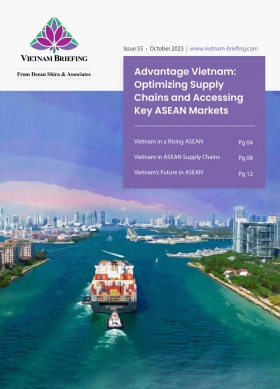Boosting Tourism: Thailand, Malaysia, Singapore Target Chinese Travel Spending
Thailand, Malaysia, and Singapore are offering visa-free travel to Chinese tourists during the first Spring Festival (Chinese New Year / CNY) holiday since Beijing lifted pandemic travel restrictions. They aim to attract a significant number of Chinese visitors as thousands plan to travel abroad.
Chinese travelers frequently express dissatisfaction with the lengthy visa application process and associated inconveniences. Their passport ranks 62nd on the Henley Passport Index, which evaluates passports from 199 countries based on the number of destinations accessible without a prior visa.
Now several Chinese travelers who would have opted for plans to Western markets or domestic destinations are seriously considering these Southeast Asian hubs.
The three Southeast Asian markets are seeking to lure high spending Chinese travelers who may find travel to Western markets a hassle due to costs and time involved in meeting documentation requirements or professionals who would have otherwise explored domestic sites during the CNY break. Hotel chains and hospitality establishments have launched various lunar new year associated promotions and attractive deals, as several countries in the region mark the festivities. As such, Chinese travelers will feel more at home.
The visa waivers are also timely as the Chinese economy is experiencing a slowdown and disposable incomes are getting affected, which would impact expensive outbound travel.
Prior to the pandemic outbreak, Chinese tourists were known to be big spenders and a crucial source of revenue for most tourist markets around the world, including in Southeast Asia. Chinese holidayers accounted for more than a quarter of all tourists visiting Thailand in 2019. That year, Chinese tourists spent US$3 billion during their travel to Singapore.
After Thailand introduced its visa waiver in September, Chinese have accounted for the bulk of tourists to the nation. Authorities expect 177,000 Chinese tourists this CNY holiday, per a Reuters report, which is more than three-times the number from 2023. There will be some time before the travel numbers and tourism revenue catch up to the pre-pandemic levels, but tourism authorities are seeing a difference.
Malaysia introduced its 30-day visa-free policy for Chinese in December, and targets attracting 5-7 million Chinese tourists in 2024. This would double pre-pandemic numbers. The two countries mark 50 years of diplomatic ties in 2024. Government data shows Malaysia welcomed 498,540 Chinese tourists in the first six months of 2023 (January-June), a figure almost a third of pre-pandemic levels. Malaysia’s economic growth is anticipated to meet the government’s 4 percent target this year, with tourism playing a significant role in driving this progress.
Meanwhile Singapore, positioned as an Asian air traffic hub, leads its Southeast Asian counterparts in attracting Chinese visitors. The number of direct flights from mainland China to Singapore has increased by nearly 5 percent this month compared to the same period in 2019, per the Reuters report. In comparison, direct flights between Malaysia to mainland China has reduced 33 percent from 2019 levels and between Thailand and mainland China have reduced 17 percent.
Finally, starting February 9, China and Singapore are implementing a mutual visa-free entry policy for their citizens, allowing stays of up to 30 days. Individuals holding ordinary passports and traveling for tourism, family visits, or business purposes will benefit from this new agreement.
In 2023, international tourist arrivals to Singapore experienced a dramatic surge, more than doubling from the previous year to reach 13.6 million visitors, compared to 6.3 million in 2022. The Singapore Tourism Board (STB) noted that this increase aligned with its projections and represented 71 percent of the tourist levels observed in 2019.
Indonesia emerged as the leading source of tourists to Singapore, with 2.3 million visitors, followed by China and Malaysia with 1.4 million and 1.1 million tourists respectively, according to data provided by the STB. Additionally, key markets such as Australia, South Korea, and the USA contributed significantly to the sector’s recovery.
Looking ahead, the STB anticipates continued recovery in the tourism sector, driven by enhanced global flight connectivity, increased capacity, and the implementation of a mutual 30-day visa-free travel policy between China and Singapore. With these factors in play, the tourism board projects international visitor arrivals to reach approximately 15 to 16 million, contributing an estimated SG$26 billion to SG$27.5 billion in tourism receipts.
About Us
ASEAN Briefing is produced by Dezan Shira & Associates. The firm assists foreign investors throughout Asia and maintains offices throughout ASEAN, including in Singapore, Hanoi, Ho Chi Minh City, and Da Nang in Vietnam, in addition to Jakarta, in Indonesia. We also have partner firms in Malaysia, the Philippines, and Thailand as well as our practices in China and India. Please contact us at asean@dezshira.com or visit our website at www.dezshira.com.
- Previous Article Singapore and China Sign Three MOUs, Boost Business Ties
- Next Article Taxation of Foreign Sourced Income in Thailand Begins in 2024









